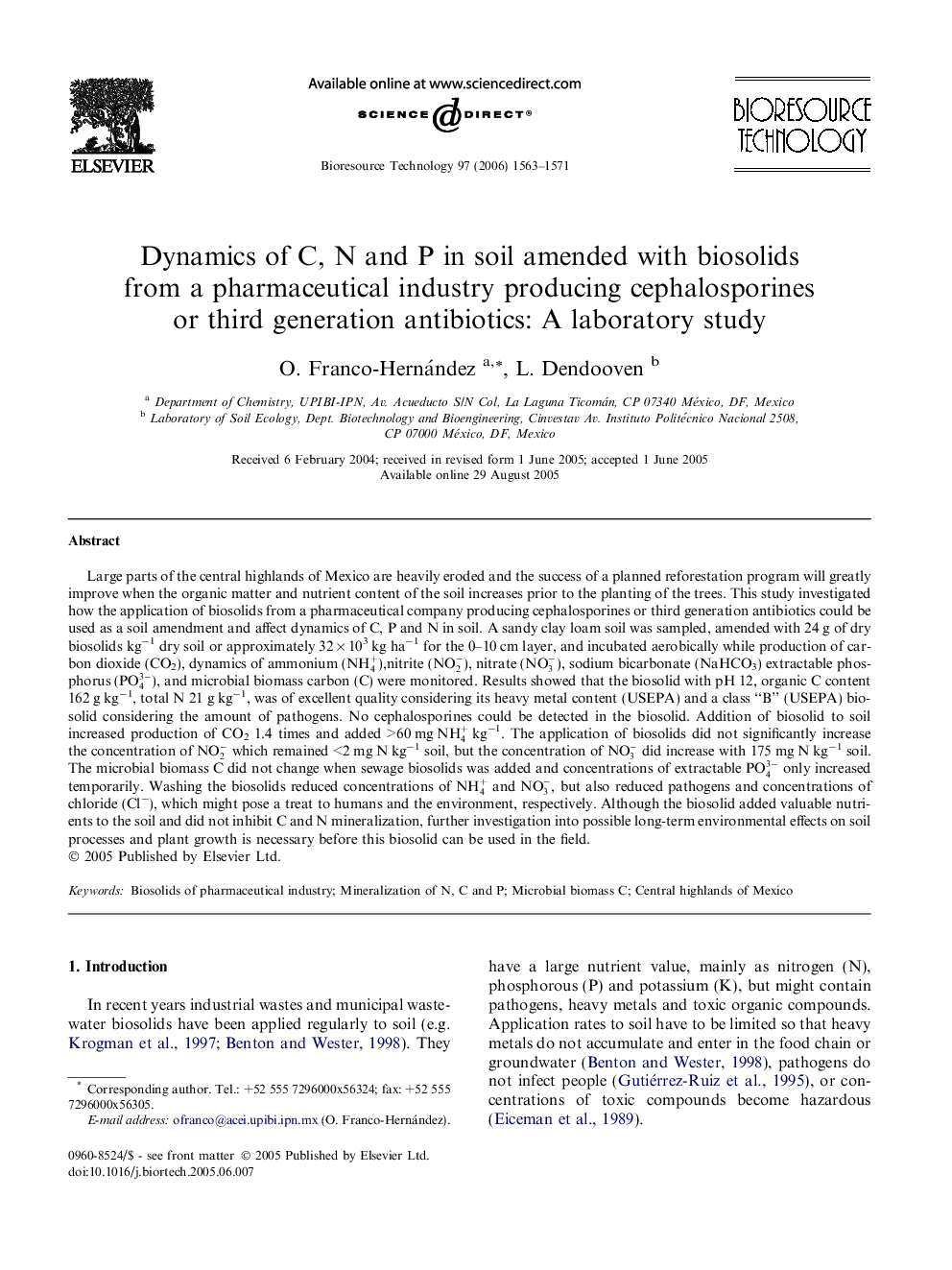| کد مقاله | کد نشریه | سال انتشار | مقاله انگلیسی | نسخه تمام متن |
|---|---|---|---|---|
| 686728 | 889115 | 2006 | 9 صفحه PDF | دانلود رایگان |

Large parts of the central highlands of Mexico are heavily eroded and the success of a planned reforestation program will greatly improve when the organic matter and nutrient content of the soil increases prior to the planting of the trees. This study investigated how the application of biosolids from a pharmaceutical company producing cephalosporines or third generation antibiotics could be used as a soil amendment and affect dynamics of C, P and N in soil. A sandy clay loam soil was sampled, amended with 24 g of dry biosolids kg−1 dry soil or approximately 32 × 103 kg ha−1 for the 0–10 cm layer, and incubated aerobically while production of carbon dioxide (CO2), dynamics of ammonium (NH4+),nitrite (NO2-), nitrate (NO3-), sodium bicarbonate (NaHCO3) extractable phosphorus (PO43-), and microbial biomass carbon (C) were monitored. Results showed that the biosolid with pH 12, organic C content 162 g kg−1, total N 21 g kg−1, was of excellent quality considering its heavy metal content (USEPA) and a class “B” (USEPA) biosolid considering the amount of pathogens. No cephalosporines could be detected in the biosolid. Addition of biosolid to soil increased production of CO2 1.4 times and added >60 mg NH4+ kg−1. The application of biosolids did not significantly increase the concentration of NO2- which remained <2 mg N kg−1 soil, but the concentration of NO3- did increase with 175 mg N kg−1 soil. The microbial biomass C did not change when sewage biosolids was added and concentrations of extractable PO43- only increased temporarily. Washing the biosolids reduced concentrations of NH4+ and NO3-, but also reduced pathogens and concentrations of chloride (Cl−), which might pose a treat to humans and the environment, respectively. Although the biosolid added valuable nutrients to the soil and did not inhibit C and N mineralization, further investigation into possible long-term environmental effects on soil processes and plant growth is necessary before this biosolid can be used in the field.
Journal: Bioresource Technology - Volume 97, Issue 13, September 2006, Pages 1563–1571